Different Functions of Proteins in the Biological System
In Lecturio - Proteins are important biomolecules because they serve a number of functions essential to formation, function, and regulation of body’s cells, tissues, and organs. They can act as enzymes, hormones, antibodies, structural component of the cell, and transport medium for different molecules and organs.In this article, the different functions of proteins in the biological system are highlighted. Specifically, the antibodies and their role in immune response, the use of proteins as catalysts for biological reactions and in gene regulation and transport of materials are discussed in this article.
Table of Contents
Are you more of a visual learner? Check out our online video lectures and start your biochemistry course now for free!
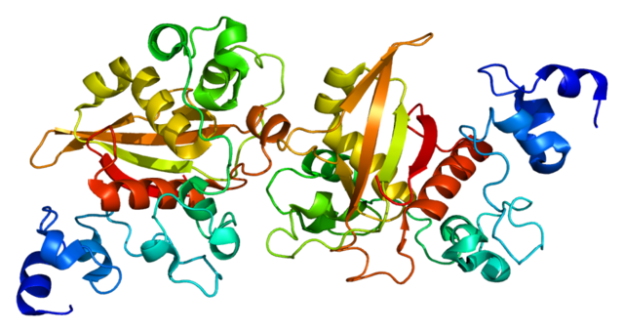
Antibodies
Antibodies are glycoproteins that uniquely bind to a protein or other molecules. They belong to a family of globular proteins called immunoglobulins. They are antigen-reactive proteins that are present in immune serum, called antiserum. They are produced after a vertebrate host is exposed to a given antigen, called an immunogen.
“Antibodies. Proteins of the Immune System” Image created by Lecturio
This enables him to detect the presence of foreign or non-self molecules inside it. The Y-shaped arm of the antibody defines to which molecules they will interact. It also defines what response will be made by the cell. Possible responses include complement-mediated lysis, enhanced phagocytosis, and or occurrence of allergic reactions. These responses occur once antibodies bind to the antigens. Humans are able to express five types of antibody or immunoglobulin classes.
The five classes are:
- IgM
- IgA
- IgG
- IgE
- IgD
IgG is the antibody induced by protein antigens and constitutes 80% of the antibody in a serum. Human IgA, on the other hand, is the predominant class of antibody in extravascular secretions. It consists of 13% of the antibodies in human serum. Human IgM is the antibody induced by polysaccharide antigens. It is the first antibody that appears during an immune response. It is also the first ones to develop in the fetus. IgD is the antibody that remains membrane-bound. It is one of the main receptors on mature B cells.
It regulates the cell’s activation. Human IgE is the antibody that binds through its Fc part of mast cells or basophils. When the mast cell and the basophil are exposed to the same antigens, it triggers allergic reactions.
Gene Expression
Gene expression is the process by which genetic instructions are processed to produce specific gene products. Common products include proteins that are essential for different biological activities. This includes enzymes, hormones, and receptors. To prevent overproduction of certain gene products, different control mechanisms are installed in the cells. Transcriptional regulators are proteins that recognize certain areas in the DNA.When these transcriptional regulators bind to the DNA, it acts a switch that regulates transcription of a distinct set of genes. Transcription switches also allow cells to respond to changes in the environment. Transcription switches may act either as repressor or activator. Repressors are proteins that switch genes off. On the other hand, activators are proteins that promote or activate genes.
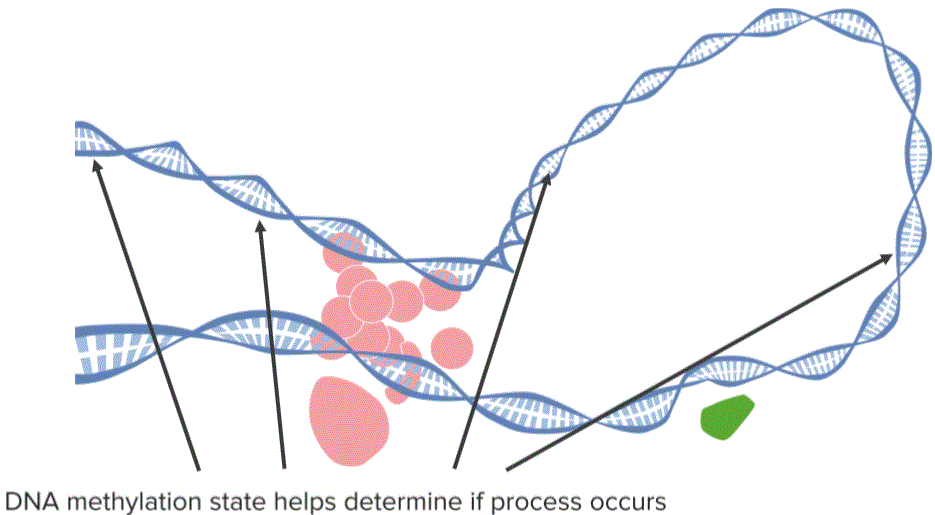
“Gene Expression. Controlling the Expression of Cellular Proteins” Image created by Lecturio
Catalysis
Another important function for proteins is catalyzing a number of reactions. Most of the metabolic reactions in biological systems involve the use of enzymes. In fact, these reactions will not occur if an individual does not have the enzyme to catalyze the reaction. Enzymes are highly specific that they usually catalyze a single reaction or very few related ones.| Enzyme | Turnover number (per second) |
| Carbonic anhydrase | 699.000 |
| 3-Ketoesteroid isomerase | 280.000 |
| Acetylcholinesterase | 25.500 |
| Penicillinase | 2.000 |
| Lactate dehydrogenase | 1.000 |
| Chymotrypsin | 100 |
| DNA polymerase I | 15 |
| Tryptophan synthetase | 2 |
| Lysozyme | 0.5 |
Different models were used to describe the action of enzymes during catalysis. The most common models are the lock and key model and the induced-fit model. In the lock and key model, Emil Fischer postulated that enzymes and substrates are like locks and keys. They fit perfectly with each other. This explains the high specificity of enzymes to its substrate because this means an enzyme will only interact with a specific substrate that fits in its active site. If the substrate and the enzyme do not fit, then no reaction will occur.
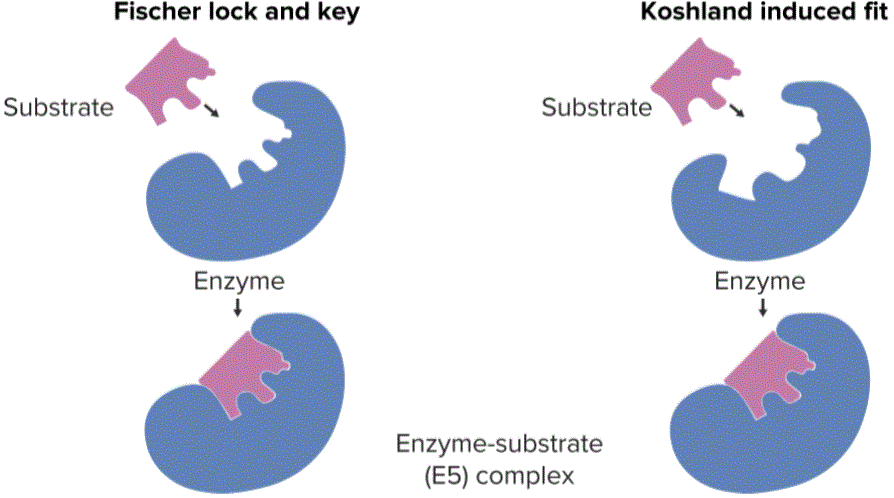
“Catalysis. Enzyme Substrate Interaction” Image created by Lecturio
Transport Proteins
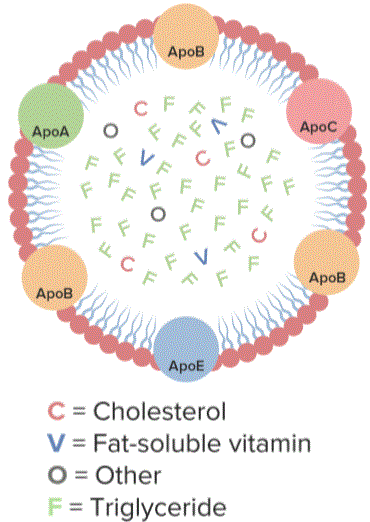
“Transport Proteins. Cellular and Organismal” Image created by Lecturio
Hemoglobin is the transport protein responsible for transporting oxygen from the lungs to the rest of the body. Albumins are carrier proteins for steroids, fatty acids, and the thyroid hormone. Another type of transport proteins are the membrane transport proteins. They are responsible for the movement of ions, small molecules or other macromolecules across a biological membrane. They assist in the transport through active transport or facilitated diffusion.
Oxygen Transport
Two major proteins are responsible for the transport of oxygen molecules; these are myoglobin and hemoglobin. Oxygen molecules have different affinities to these two types of proteins. Myoglobin has a higher O2 affinity even at low O2 concentration. On the other hand, hemoglobin has a variable degree of O2 affinity depending on the concentration of O2.
“Oxygen Transport. Hemoglobin and Myoglobin” Image created by Lecturio
Na+/K+ ATPase
Na+/K+ ATPase is an enzyme formed of two membrane-bound polypeptides that serve as a solute pump to transport sodium ions out of cells while pumping potassium ions into the cells. Transport of the ions is due to a concentration gradient. The basic mechanism of action of this transport protein involves the binding of ATP to the pump before 3 intracellular Na+ ions also bind to it.ATP is then hydrolyzed, leading to phosphorylation and the eventual release of ADP. Conformational changes lead to the opening of the pump to the outside of the cells allowing the release of the ions. Two extracellular K+ions then bind to the pump causing dephosphorylation of the pump. The pump reverts to its original conformation and transports K+ to the inside of the cell. The process is repeated to regulate the ionic conditions inside and outside the cell.
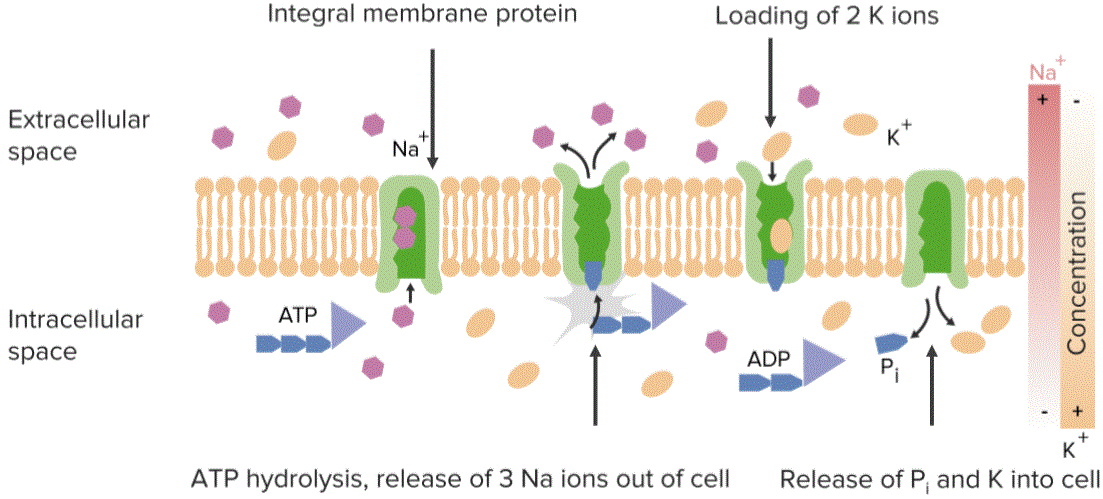
“Na/K ATPase. Transmembrane Ion Transport” Image created by Lecturio
Review Questions
The correct answers can be found below the references.1. Which of the following proteins are responsible for controlling gene regulation?
- Lipoprotein
- Enzyme
- Transcription switches
- Antibodies
- Membrane protein
- Hemogrlobin
- Pepsinogen
- Lipoprotein
Comentários
Enviar um comentário